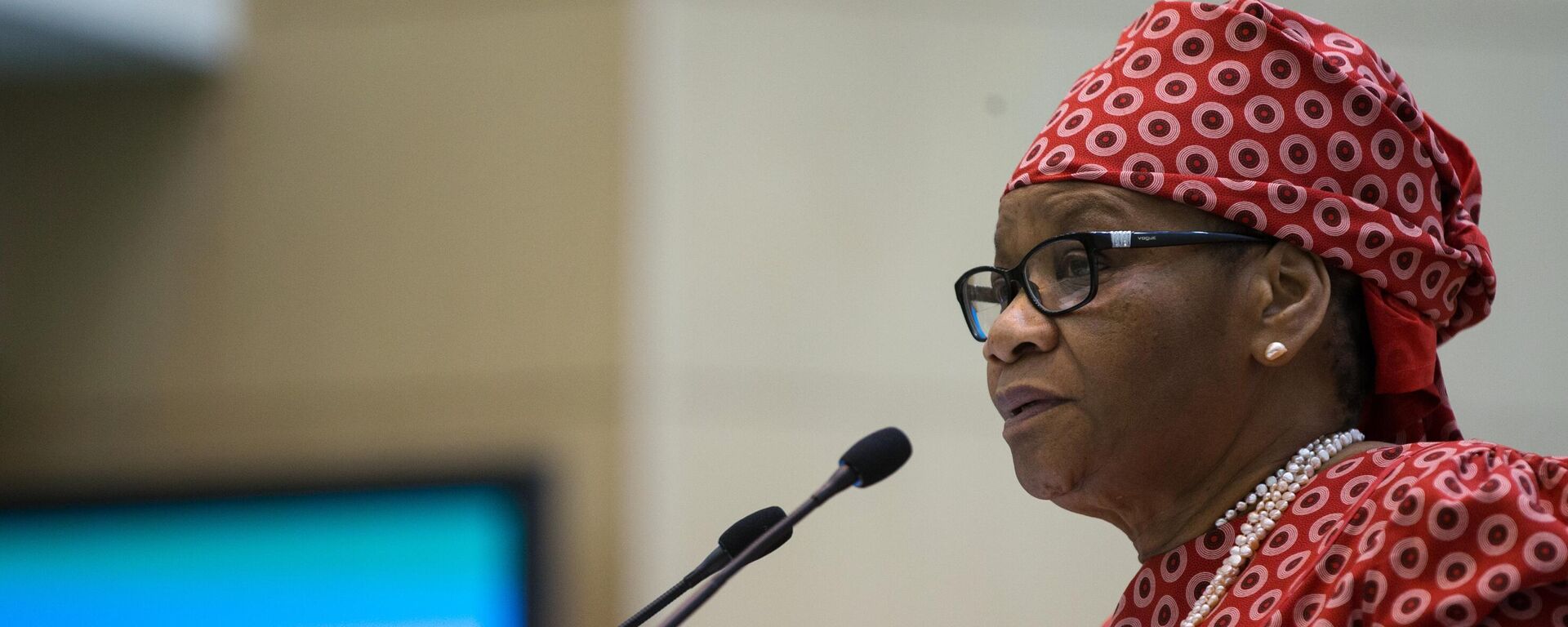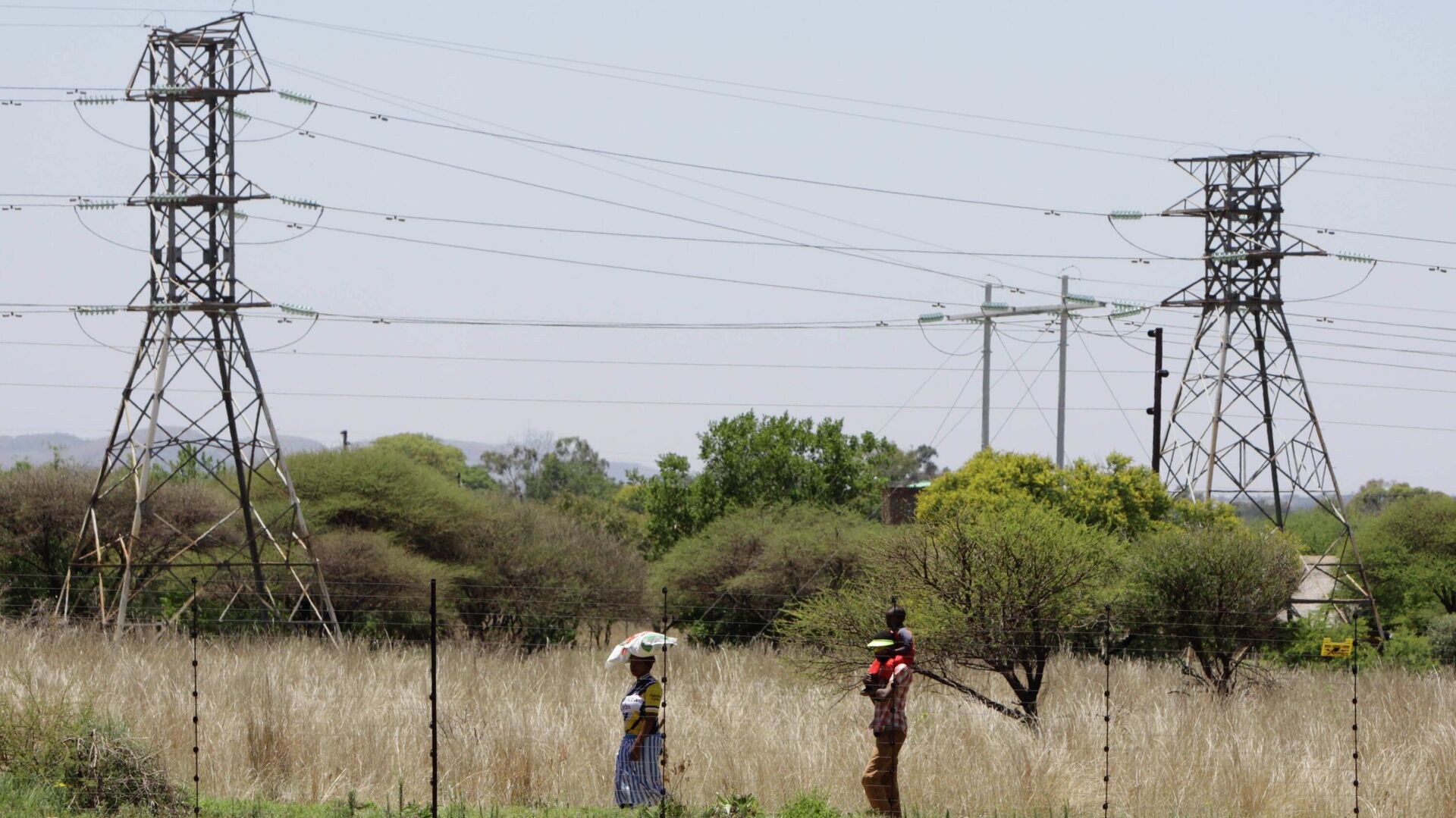https://sputnikglobe.com/20220911/south-african-utility-giant-eskom-introduces-blackouts-due-to-power-cuts-1100649807.html
South African Utility Giant Eskom Introduces Power Cuts Due to Breakdowns
South African Utility Giant Eskom Introduces Power Cuts Due to Breakdowns
Sputnik International
While Sub-Saharan Africa is one of the least electrified regions in the world, South Africa introduced a national electrification program following the end of... 11.09.2022, Sputnik International
2022-09-11T09:18+0000
2022-09-11T09:18+0000
2022-11-23T11:36+0000
africa
electricity blackout
south africa
southern africa
https://cdn1.img.sputnikglobe.com/img/07e6/09/0b/1100650334_0:179:3001:1867_1920x0_80_0_0_ef8d60a57da33d7f2675101fce6bb5a7.jpg
South Africa’s state-owned power utility Eskom Holdings SOC Ltd. has announced that it will increase the intensity of power cuts amid "additional breakdowns.""Regretfully, due to additional breakdowns overnight, Eskom was unable to replenish the emergency generation reserves, which has worsened the current generation capacity constraints," the power utility said in a statement.The current round of blackouts started on September 6th. Now Eskom has proclaimed the implementation of so-called stage-4 load shedding: the company will cut 4,000 megawatts from the grid, until 5 a.m. September 12.Stage 4 cuts mean that homes and businesses without their own generators will not have power for six hours a day, impacting the use of appliances and trading.This is the result of power stations being shut down for emergency repairs and critical planned maintenance.The country has experienced 96 days of power cuts so far this year, according to Bloomberg.Issues of Power Cuts in South AfricaIn the 1970s, South Africa enhanced its power generation capacity, which, among other things, ensured the smooth work of the country's industry. However, over time, poor management and a lack of maintenance culture resulted in Eskom not being able to provide reliable power generation, South African BusinessTech reports.Eskom and various MPs have attributed these outages to insufficient power output. Load shedding occurs whenever power units are taken offline for maintenance, repair, or refueling. The solution necessitates the construction of additional power plants and generators, according to Eskom and government officials.Decision makers and executives in both Eskom and the government in the late 1990s predicted that Eskom would run out of electricity by 2007 unless preventive steps were taken, according to the South African Mail & Guardian.The first period of chronic power outages occurred in late 2007 and lasted until May 2008. The South African investigative journalism television series “Carte Blanche” reported that the problem was partly due to the insufficient and untimely supply of coal to coal-fired power plants. This factor was important because Eskom's aging power stations run mostly on coal. Several other reasons have been suggested, including a shortage of skilled workers and growing demand for electricity throughout the country.In 2019, stage 6 load shedding, which left households and businesses without power for an even longer period than stage 4, was implemented for the first time. Recently, stage 6 load shedding was introduced on June 28, Business Insider reports.South Africa is the world’s largest platinum producer and second-largest palladium exporter after Russia. Mining companies estimate that hundreds of thousands of ounces of gold and platinum are lost each year due to the country’s energy crisis. Metal exports have helped South Africa finance its current account deficit. Experts state that South Africa’s GDP is negatively affected because of power outages affecting the mines.As for banks and telecommunications companies, they are forced to use backup systems to be able to operate as usual. Many large factories report being unable to bear the capital costs required to keep operations running.Small business owners in South Africa said load shedding was the number one issue they faced in the first quarter of 2019. In the Small Business Sentiment Report of 3,984 small business owners, 44% said they were severely affected by the shedding and 85% said it caused their income to drop. 40% of small businesses lost 20% or more of revenue during a power outage. 20% of owners say that if load shedding continues, they will have to consider downsizing or closing their businesses.South African National Energy Crisis Committee of Ministers (NECOM), established by the president of South Africa Cyril Ramaphosa, proclaimed its plans to tackle the energy crises on August 1.Also it’s stated that NECOM has already begun to meet regularly to ensure that these measures are implemented swiftly.As South African President Ramaphosa said in his address to the nation on July 25: “The crisis that we are facing requires that we should take bold, courageous and decisive action to close the electricity gap.”
https://sputnikglobe.com/20220907/von-der-leyen-eu-to-propose-mandatory-target-for-reducing-electricity-use-at-peak-hours-1100501313.html
https://sputnikglobe.com/20220816/russia-plays-key-role-in-africas-military--economic-stability---south-africas-defense-minister-1099661505.html
africa
south africa
southern africa
Sputnik International
feedback@sputniknews.com
+74956456601
MIA „Rosiya Segodnya“
2022
News
en_EN
Sputnik International
feedback@sputniknews.com
+74956456601
MIA „Rosiya Segodnya“
Sputnik International
feedback@sputniknews.com
+74956456601
MIA „Rosiya Segodnya“
electricity blackout, south africa, southern africa
electricity blackout, south africa, southern africa
South African Utility Giant Eskom Introduces Power Cuts Due to Breakdowns
09:18 GMT 11.09.2022 (Updated: 11:36 GMT 23.11.2022) While Sub-Saharan Africa is one of the least electrified regions in the world, South Africa introduced a national electrification program following the end of apartheid that connected three million households to the national grid. However, this increased demand and put a strain on the existing power network, which led to rolling blackouts.
South Africa’s state-owned
power utility Eskom Holdings SOC Ltd. has announced that it will increase the intensity of power cuts amid "additional breakdowns."
"Regretfully, due to additional breakdowns overnight, Eskom was unable to replenish the emergency generation reserves, which has worsened the current generation capacity constraints," the power utility said in a statement.

7 September 2022, 12:48 GMT
The current round of blackouts started on September 6th. Now Eskom has proclaimed the implementation of so-called stage-4 load shedding: the company will cut 4,000 megawatts from the grid, until 5 a.m. September 12.
Stage 4 cuts mean that homes and businesses without their own generators will not have power for six hours a day, impacting the use of appliances and trading.
This is the result of power stations being shut down for emergency repairs and critical planned maintenance.
The country has experienced 96 days of power cuts so far this year, according to Bloomberg.
Issues of Power Cuts in South Africa
In the 1970s, South Africa enhanced its power generation capacity, which, among other things, ensured the smooth work of the country's industry. However, over time, poor management and a lack of maintenance culture resulted in Eskom not being able to provide reliable power generation, South African BusinessTech reports.
Eskom and various MPs have attributed these outages to insufficient power output. Load shedding occurs whenever
power units are taken offline for maintenance, repair, or refueling. The solution necessitates the construction of additional power plants and generators, according to Eskom and government officials.
Decision makers and executives in both Eskom and the government in the late 1990s predicted that Eskom would run out of electricity by 2007 unless preventive steps were taken, according to the South African Mail & Guardian.
The first period of chronic power outages occurred in late 2007 and lasted until May 2008. The South African investigative journalism television series “Carte Blanche” reported that the problem was partly due to the insufficient and untimely supply of coal to coal-fired power plants. This factor was important because Eskom's aging
power stations run mostly on coal. Several other reasons have been suggested, including a shortage of skilled workers and growing demand for electricity throughout the country.
In 2019, stage 6 load shedding, which left households and businesses without power for an even longer period than stage 4, was implemented for the first time. Recently, stage 6 load shedding was introduced on June 28, Business Insider reports.

16 August 2022, 15:02 GMT
South Africa is the world’s largest platinum producer and second-largest palladium exporter after Russia. Mining companies estimate that hundreds of thousands of ounces of gold and platinum are lost each year due to the country’s energy crisis. Metal exports have helped South Africa finance its current account deficit. Experts state that South Africa’s GDP is negatively affected because of power outages affecting the mines.
As for banks and telecommunications companies, they are forced to use backup systems to be able to operate as usual. Many large factories report being unable to bear the capital costs required to keep operations running.
Small business owners in South Africa said load shedding was the number one issue they faced in the first quarter of 2019. In the Small Business Sentiment Report of 3,984 small business owners, 44% said they were severely affected by the shedding and 85% said it caused their income to drop. 40% of small businesses lost 20% or more of revenue during a
power outage. 20% of owners say that if load shedding continues, they will have to consider downsizing or closing their businesses.
South African National Energy Crisis Committee of Ministers (NECOM), established by the president of South Africa Cyril Ramaphosa, proclaimed its plans to tackle the energy crises on August 1.
The plan includes five interventions with specific measures and timeframes to address the electricity shortfall: "Fix Eskom and improve the availability of existing supply; enable and accelerate private investment in generation capacity; accelerate procurement of new capacity from renewables, gas and battery storage; unleash businesses and households to invest in rooftop solar; fundamentally transform the electricity sector to achieve long-term energy security," the government’s official website notes.
Also it’s stated that NECOM has already begun to meet regularly to ensure that these measures are implemented swiftly.
As South African President Ramaphosa said in his address to the nation on July 25: “The crisis that we are facing requires that we should take bold, courageous and decisive action to close the electricity gap.”







